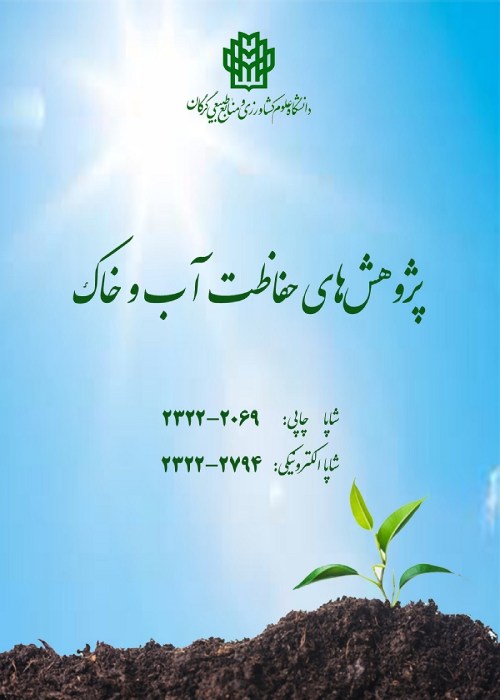Comparing decision tree and instance-based learning models to estimate soil saturated hydraulic conductivity
Author(s):
Article Type:
Research/Original Article (دارای رتبه معتبر)
Abstract:
Background and objectives
Soil saturated hydraulic conductivity is one of the most important physical characteristics of soils which affects water movement in soil. Knowledge of this parameter can help to understand and solve environmental problems. But measurement of this parameter by direct laboratory and field methods is hard, time consuming and expensive. Thus there is need to use alternative methods based on conveniently available soil properties to estimate it with less effort, time and cost. Nonparametric methods are new indirect methods to estimate hydraulic properties of soil, including soil saturated hydraulic conductivity (ks). The aim of this study was to use two methods such as M5P decision tree and an IBk instance-based learning method, which is a classifier with k nearest neighbors to estimate ks from conveniently available properties of soil.
Materials and methods
In this study a dataset of 151 soil samples which was collected from a site in Bojnord province was used. Conveniently available soil properties included sand, silt and clay percentage, bulk density, particle density, EC, OC, TNV, saturated moisture and pH. Saturated hydraulic conductivity was measured with the Guelph permeameter. The Gamma test was used to determine important parameters for predicting and the modeling procedure of ks. Then various combinations of parameters of the data set were compared to each other based on their Gamma value, to determine the optimum combination of parameters for modeling ks. Using the optimum combination which had the least Gamma value, the M5P decision tree and the IBk instance-based learning methods were performed. To improve the IBk, two different distance weighting systems were used. Finally, evaluation statistics of each model including R2, RMSE, MAE, and MAPE were calculated.
Results
The optimum combination determined by the Gamma test which was then used for modeling, included sand, silt and clay percent, TNV percent, EC, and bulk density. The tree selected bulk density as the most important discriminative parameter, and constructed 3 linear equations for predicting ks, based on the bulk density value. Evaluation criteria calculated for this model with RMSE= 23.89 cm/d and MAPE= 20.50% it didn’t predict ks accurately. Different weighting systems didn’t improve IBk performance. Also the IBk model with RMSE= 31.23 cm/d and MAPE= 23.24% didn't estimate ks accurately.
Conclusion
The decision tree model performed better than the instance-based learning model to estimate ks. Also the tree showed some information about the structure of the studied soil.Keywords:
Language:
Persian
Published:
Water and Soil Conservation, Volume:25 Issue: 5, 2018
Pages:
167 to 184
magiran.com/p1945063
دانلود و مطالعه متن این مقاله با یکی از روشهای زیر امکان پذیر است:
اشتراک شخصی
با عضویت و پرداخت آنلاین حق اشتراک یکساله به مبلغ 1,390,000ريال میتوانید 70 عنوان مطلب دانلود کنید!
اشتراک سازمانی
به کتابخانه دانشگاه یا محل کار خود پیشنهاد کنید تا اشتراک سازمانی این پایگاه را برای دسترسی نامحدود همه کاربران به متن مطالب تهیه نمایند!
توجه!
- حق عضویت دریافتی صرف حمایت از نشریات عضو و نگهداری، تکمیل و توسعه مگیران میشود.
- پرداخت حق اشتراک و دانلود مقالات اجازه بازنشر آن در سایر رسانههای چاپی و دیجیتال را به کاربر نمیدهد.
In order to view content subscription is required
Personal subscription
Subscribe magiran.com for 70 € euros via PayPal and download 70 articles during a year.
Organization subscription
Please contact us to subscribe your university or library for unlimited access!



